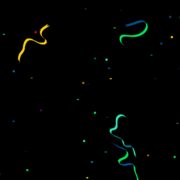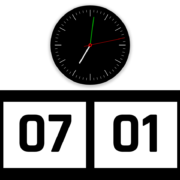9 Essential JavaScript Functions
I remember the early days of JavaScript where you needed a simple function for just about everything because the browser vendors implemented features differently, and not just edge features, basic features, like addEventListener and attachEvent. Times have changed but there are still a few functions each developer should have in their arsenal, for performance for functional ease purposes.
debounce
The debounce function can be a game-changer when it comes to event-fueled performance. If you aren’t using a debouncing function with a scroll, resize, key* event, you’re probably doing it wrong. Here’s a debounce function to keep your code efficient:
// Returns a function, that, as long as it continues to be invoked, will not
// be triggered. The function will be called after it stops being called for
// N milliseconds. If `immediate` is passed, trigger the function on the
// leading edge, instead of the trailing.
function debounce(func, wait, immediate) {
var timeout;
return function() {
var context = this, args = arguments;
var later = function() {
timeout = null;
if (!immediate) func.apply(context, args);
};
var callNow = immediate && !timeout;
clearTimeout(timeout);
timeout = setTimeout(later, wait);
if (callNow) func.apply(context, args);
};
};
// Usage
var myEfficientFn = debounce(function() {
// All the taxing stuff you do
}, 250);
window.addEventListener('resize', myEfficientFn);
The debounce function will not allow a callback to be used more than once per given time frame. This is especially important when assigning a callback function to frequently-firing events.
poll
As I mentioned with the debounce function, sometimes you don’t get to plug into an event to signify a desired state — if the event doesn’t exist, you need to check for your desired state at intervals:
// The polling function
function poll(fn, timeout, interval) {
var endTime = Number(new Date()) + (timeout || 2000);
interval = interval || 100;
var checkCondition = function(resolve, reject) {
// If the condition is met, we're done!
var result = fn();
if(result) {
resolve(result);
}
// If the condition isn't met but the timeout hasn't elapsed, go again
else if (Number(new Date()) < endTime) {
setTimeout(checkCondition, interval, resolve, reject);
}
// Didn't match and too much time, reject!
else {
reject(new Error('timed out for ' + fn + ': ' + arguments));
}
};
return new Promise(checkCondition);
}
// Usage: ensure element is visible
poll(function() {
return document.getElementById('lightbox').offsetWidth > 0;
}, 2000, 150).then(function() {
// Polling done, now do something else!
}).catch(function() {
// Polling timed out, handle the error!
});
Polling has long been useful on the web and will continue to be in the future!
once
There are times when you prefer a given functionality only happen once, similar to the way you’d use an onload event. This code provides you said functionality:
function once(fn, context) {
var result;
return function() {
if(fn) {
result = fn.apply(context || this, arguments);
fn = null;
}
return result;
};
}
// Usage
var canOnlyFireOnce = once(function() {
console.log('Fired!');
});
canOnlyFireOnce(); // "Fired!"
canOnlyFireOnce(); // nada
The once function ensures a given function can only be called once, thus prevent duplicate initialization!
parseURL
This function parses a URL and returns an associative array containing any of the various components of the URL that are present.
This function is not meant to validate the given URL, it only breaks it up into the above listed parts. Partial URLs are also accepted, parseURL() tries its best to parse them correctly.
/**
* Parse a URL and return its components.
*
* @param {String} url The URL to parse.
* @param {String} component Specify one of 'URL_SCHEME', 'URL_HOST', 'URL_PORT', 'URL_USER', 'URL_PASS', 'URL_PATH', 'URL_QUERY' or 'URL_FRAGMENT' to retrieve just a specific URL component as a string.
* @param {String} mode Specify one of 'php', 'strict' or 'loose' to set the parsing mode.
*
* @return {Mixed}
*/
function parseURL(url, component, mode) {
var query, key = ['source', 'scheme', 'authority', 'userInfo', 'user', 'pass', 'host', 'port',
'relative', 'path', 'directory', 'file', 'query', 'fragment'],
mode = mode || 'php',
parser = {
php: /^(?:([^:\/?#]+):)?(?:\/\/()(?:(?:()(?:([^:@]*):?([^:@]*))?@)?([^:\/?#]*)(?::(\d*))?))?()(?:(()(?:(?:[^?#\/]*\/)*)()(?:[^?#]*))(?:\?([^#]*))?(?:#(.*))?)/,
strict: /^(?:([^:\/?#]+):)?(?:\/\/((?:(([^:@]*):?([^:@]*))?@)?([^:\/?#]*)(?::(\d*))?))?((((?:[^?#\/]*\/)*)([^?#]*))(?:\?([^#]*))?(?:#(.*))?)/,
loose: /^(?:(?![^:@]+:[^:@\/]*@)([^:\/?#.]+):)?(?:\/\/\/?)?((?:(([^:@]*):?([^:@]*))?@)?([^:\/?#]*)(?::(\d*))?)(((\/(?:[^?#](?![^?#\/]*\.[^?#\/.]+(?:[?#]|$)))*\/?)?([^?#\/]*))(?:\?([^#]*))?(?:#(.*))?)/ // Added one optional slash to post-scheme to catch file:/// (should restrict this)
};
var m = parser[mode].exec(url),
uri = {},
i = 14;
while (i--) {
if (m[i]) {
uri[key[i]] = m[i];
}
}
if (component) {
return uri[component.replace('URL_', '').toLowerCase()];
}
if (mode !== 'php') {
var name = 'queryKey';
parser = /(?:^|&)([^&=]*)=?([^&]*)/g;
uri[name] = {};
query = uri[key[12]] || '';
query.replace(parser, function ($0, $1, $2) {
if ($1) {uri[name][$1] = $2;}
});
}
uri.source = null;
return uri;
};
// Usage
parseURL('http://username:password@hostname/path?arg=value#anchor'); // {scheme: 'http', host: 'hostname', user: 'username', pass: 'password', path: '/path', query: 'arg=value', fragment: 'anchor'}
getAbsoluteUrl
Getting an absolute URL from a variable string isn’t as easy as you think. There’s the URL constructor but it can act up if you don’t provide the required arguments (which sometimes you can’t). Here’s a suave trick for getting an absolute URL from and string input:
/**
* Gets the absolute URI.
*
* @param {String} href The relative URL.
* @param {String} base The base URL.
*
* @return {String} The absolute URL.
*/
function getAbsoluteUrl(href, base) {// RFC 3986
function removeDotSegments(input) {
var output = [];
input.replace(/^(\.\.?(\/|$))+/, '')
.replace(/\/(\.(\/|$))+/g, '/')
.replace(/\/\.\.$/, '/../')
.replace(/\/?[^\/]*/g, function (p) {
if (p === '/..') {
output.pop();
} else {
push.call(output, p);
}
});
return output.join('').replace(/^\//, input.charAt(0) === '/' ? '/' : '');
}
function URIComponents(url) {
var m = String(url).replace(/^\s+|\s+$/g, '').match(/^([^:\/?#]+:)?(\/\/(?:[^:@]*(?::[^:@]*)?@)?(([^:\/?#]*)(?::(\d*))?))?([^?#]*)(\?[^#]*)?(#[\s\S]*)?/);
// authority = '//' + user + ':' + pass '@' + hostname + ':' port
return (m ? {
href : m[0] || '',
protocol : m[1] || '',
authority: m[2] || '',
host : m[3] || '',
hostname : m[4] || '',
port : m[5] || '',
pathname : m[6] || '',
search : m[7] || '',
hash : m[8] || ''
} : null);
}
href = URIComponents(href || '');
base = URIComponents(base || window.location.href);
return !href || !base ? null : (href.protocol || base.protocol) +
(href.protocol || href.authority ? href.authority : base.authority) +
removeDotSegments(href.protocol || href.authority || href.pathname.charAt(0) === '/' ? href.pathname : (href.pathname ? ((base.authority && !base.pathname ? '/' : '') + base.pathname.slice(0, base.pathname.lastIndexOf('/') + 1) + href.pathname) : base.pathname)) +
(href.protocol || href.authority || href.pathname ? href.search : (href.search || base.search)) +
href.hash;
};
// Usage
getAbsoluteUrl('/something'); // http://iprodev.com/something
getAbsoluteUrl('/something', 'http://google.com/'); // http://google.com/something
getAbsoluteUrl('http://iprodev.com/something', 'http://google.com/'); // http://iprodev.com/something
lightenDarkenColor
The CSS preprocessors Sass and LESS can take any color and darken() or lighten() it by a specific value. But no such ability is built into JavaScript. This function takes colors in hex format (i.e. #F06D06, with or without hash) and lightens or darkens them with a value:
/**
* Increase/Decrease the lightness of a color in the hex color format by an absolute amount.
*
* @param {String} color The string of the specified color.
* @param {Number} amount The percentage 0-100.
*
* @return {String} The lighten or darken color in hex color format.
*/
function lightenDarkenColor(color, amount) {
var usePound = false;
if (color[0] == "#") {
color = color.slice(1);
usePound = true;
}
var num = parseInt(color, 16);
var r = (num >> 16) + amount;
if (r > 255) r = 255;
else if (r < 0) r = 0;
var b = ((num >> 8) & 0x00FF) + amount;
if (b > 255) b = 255;
else if (b < 0) b = 0;
var g = (num & 0x0000FF) + amount;
if (g > 255) g = 255;
else if (g < 0) g = 0;
return (usePound ? "#" : "") + (g | (b << 8) | (r << 16)).toString(16);
}
// Usage
// Lighten
var NewColor = lightenDarkenColor("#F06D06", 20); // "#ff811a"
// Darken
var NewColor = lightenDarkenColor("#F06D06", -20); // "#dc5900"
The function isn't pretty but it gets the job done!
isNative
Knowing if a given function is native or not can signal if you're willing to override it. This handy code can give you the answer:
;(function() {
// Used to resolve the internal `[[Class]]` of values
var toString = Object.prototype.toString;
// Used to resolve the decompiled source of functions
var fnToString = Function.prototype.toString;
// Used to detect host constructors (Safari > 4; really typed array specific)
var reHostCtor = /^\[object .+?Constructor\]$/;
// Compile a regexp using a common native method as a template.
// We chose `Object#toString` because there's a good chance it is not being mucked with.
var reNative = RegExp('^' +
// Coerce `Object#toString` to a string
String(toString)
// Escape any special regexp characters
.replace(/[.*+?^${}()|[\]\/\\]/g, '\\$&')
// Replace mentions of `toString` with `.*?` to keep the template generic.
// Replace thing like `for ...` to support environments like Rhino which add extra info
// such as method arity.
.replace(/toString|(function).*?(?=\\\()| for .+?(?=\\\])/g, '$1.*?') + '$'
);
function isNative(value) {
var type = typeof value;
return type == 'function'
// Use `Function#toString` to bypass the value's own `toString` method
// and avoid being faked out.
? reNative.test(fnToString.call(value))
// Fallback to a host object check because some environments will represent
// things like typed arrays as DOM methods which may not conform to the
// normal native pattern.
: (value && type == 'object' && reHostCtor.test(toString.call(value))) || false;
}
// export however you want
module.exports = isNative;
}());
// Usage
isNative(alert); // true
isNative(myCustomFunction); // false
The function isn't pretty but it gets the job done!
insertRule
We all know that we can grab a NodeList from a selector (via document.querySelectorAll) and give each of them a style, but what's more efficient is setting that style to a selector (like you do in a stylesheet):
var sheet = (function() {
// Create the <style> tag
var style = document.createElement('style');
// Add a media (and/or media query) here if you'd like!
// style.setAttribute('media', 'screen')
// style.setAttribute('media', 'only screen and (max-width : 1024px)')
// WebKit hack :(
style.appendChild(document.createTextNode(''));
// Add the <style> element to the page
document.head.appendChild(style);
return style.sheet;
})();
// Usage
sheet.insertRule("header { float: left; opacity: 0.8; }", 1);
This is especially useful when working on a dynamic, AJAX-heavy site. If you set the style to a selector, you don't need to account for styling each element that may match that selector (now or in the future).
matchesSelector
Oftentimes we validate input before moving forward; ensuring a truthy value, ensuring forms data is valid, etc. But how often do we ensure an element qualifies for moving forward? You can use a matchesSelector function to validate if an element is of a given selector match:
function matchesSelector(el, selector) {
var p = Element.prototype;
var f = p.matches || p.webkitMatchesSelector || p.mozMatchesSelector || p.msMatchesSelector || function(s) {
return [].indexOf.call(document.querySelectorAll(s), this) !== -1;
};
return f.call(el, selector);
}
// Usage
matchesSelector(document.getElementById('myDiv'), 'div.someSelector[some-attribute=true]')
There you have it: seven JavaScript functions that every developer should keep in their toolbox. Have a function I missed? Please share it!






